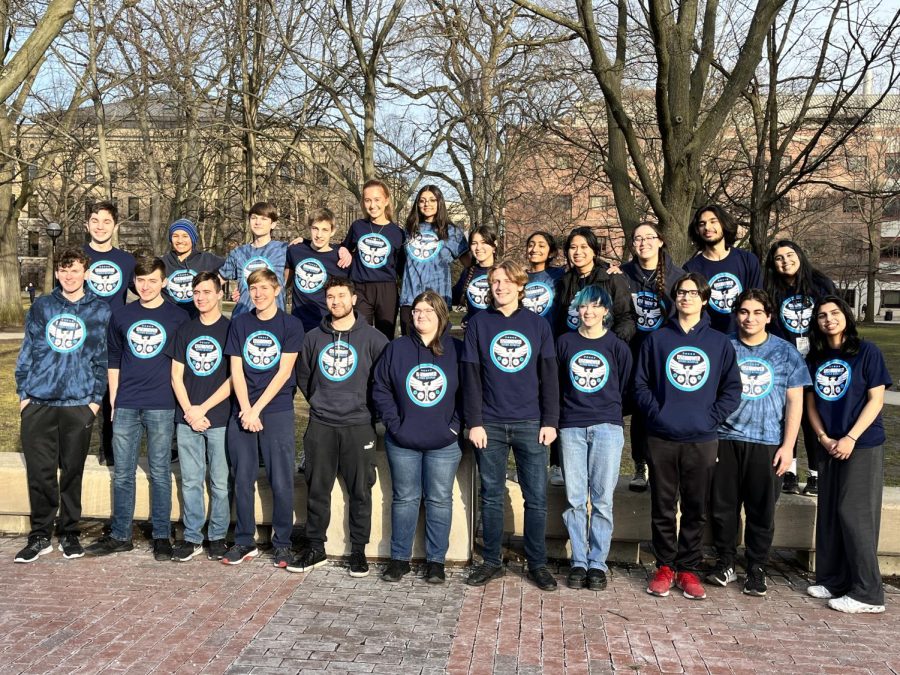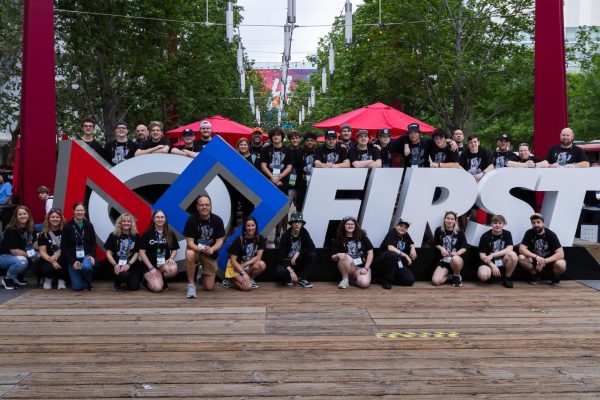Trajectory to gold
Science Olympiad succeeds at states.
Photo courtesy and not pictured: Susan Ogden
3-2-1 Launch! – Science Olympiad competitors, junior Luigi Guadagnino and sophomore Mason Kirsch win their trajectory event at states. They were chosen to compete in the trajectory event as a duo after they qualified for states. “I’m very proud of them, they are super hard workers,” team leader Sophia Witulski said.
Tennis balls, ping pong balls, racquet balls, and foam golf balls are some balls that you can find catapulting through the air at the Science Olympiad states trajectory event.
“For this just being my first year on the team, I find it to be a major success for me. I’m really happy I was able to win. I really achieved a lot for myself and did better than I ever expected,” junior Luigi Guadagnino said. “Honestly, it was great. My teammate, sophomore Mason Kirsch, really stepped up after my initial teammate had to unfortunately drop out of the competition.”
Guadagnino and Kirsch competed together in the trajectory duo event. The trajectory event is when the competitors have to build a catapult to throw a ball of their choosing onto a target placed on a mat. If landed close enough to the target, they then had to make a shot into a bucket of water. In their case, they picked a racquet ball to compete with. They had just met each other this year and only had two events assigned together. They had all cards stacked against them, however, they pulled through and still brought home the gold for the Science Olympiad team.
“I was extremely happy we won, this is my first year in the Science Olympiad so I was just really joyous,” sophomore Mason Kirsch said.
To qualify for states, each team has to get at least 100 hours of participation per year in their events. It takes hard work and time to qualify. Guadagnino and Kirsch placed first ahead of many fierce schools in the state such as: Stevenson High School, Dakota High School and Chippewa Valley High School. They had the opportunity to mark themselves in history as the underdogs and they did it.
“It helped a lot that Kirsch is such a hard-working person, he was always there early,” Guadagnino said. “The tests were difficult, but I knew what kind of teammate he was, so I knew we were going to be fine.”
Competing at an event for the Science Olympiad team is not an easy task. The Science Olympiad is a very competitive scene with little to no room for error so defeating schools who succeed in these events is no minor feat.
“I was really ecstatic for the members, they competed well for the event being very challenging to do,” senior team leader Sophia Witulski said. “I know how hard they worked and all the effort they put into their event.”
Your donation will support the student journalists of Eisenhower High School. Your contribution will allow us to purchase equipment and cover our annual website hosting costs.





![Bringing an idea to life, senior sculpture student Braden Williams begins construction on a book-based sculpture. The sculpture concept revolves around fortune telling, which Williams will evoke with a head sculpt, sporting a third eye. “It's [the eye] a bigger focus on that face. It's the main focus. Gotta put a lot of detail into that,” Williams said.](https://ikenews.com/wp-content/uploads/2025/04/IMG_3413-1-600x481.jpg)